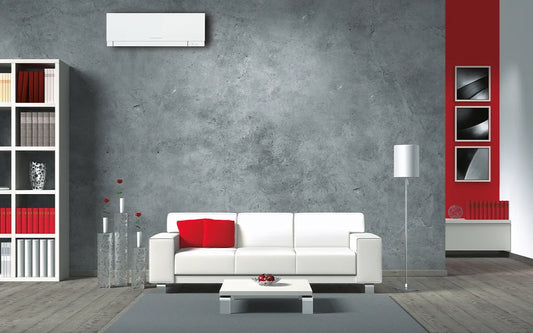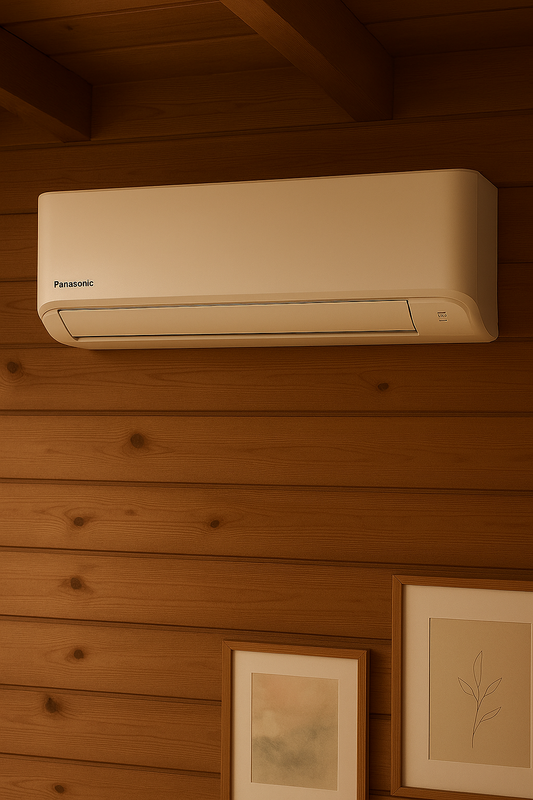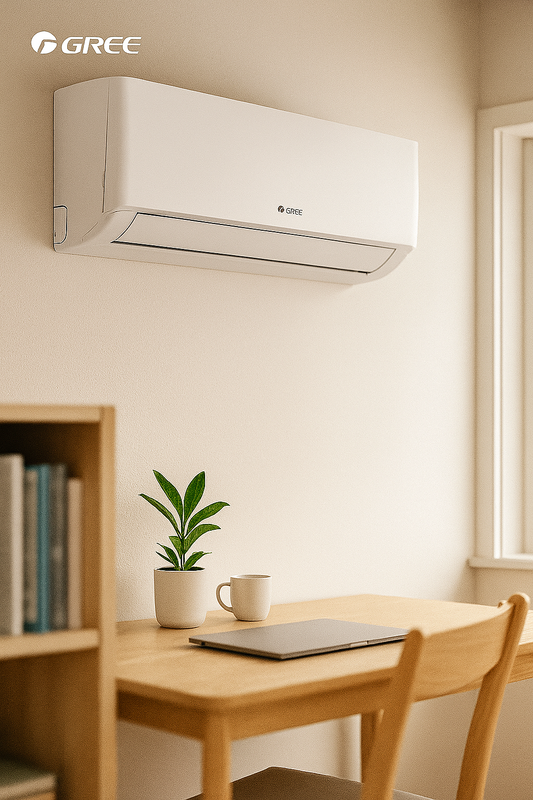Installation av värmepump luft-luft
Inledning
Värmepumpar luft-luft är en populär lösning för uppvärmning och kylning av bostäder och kommersiella fastigheter. Denna artikel kommer att utforska installationen av värmepumpar luft-luft, inklusive dess definition, fördelar, användningsområden, relaterade tekniker och vanliga frågor.
Definition och bakgrund
En värmepump luft-luft är en typ av värmepump som använder utomhusluft som en värmekälla för att värma upp eller kyla inomhusluften. Genom att utnyttja termodynamiska processer kan värmepumpen överföra värmeenergi mellan inomhus- och utomhusmiljön. Denna teknik har funnits i årtionden och har genomgått betydande teknologiska förbättringar för att bli en effektiv och miljövänlig uppvärmnings- och kylningssystem.
Fördelar och användningsområden
Installation av en värmepump luft-luft erbjuder flera fördelar, inklusive energieffektivitet, minskade energikostnader och minskad miljöpåverkan jämfört med konventionella uppvärmningssystem. Denna teknik är särskilt lämplig för områden med måttliga klimatförhållanden där behovet av intensiv uppvärmning eller kylning är begränsad.
- Energieffektivitet: Värmepumpen kan generera mer värmeenergi än den förbrukar i elektricitet, vilket resulterar i lägre energikostnader.
- Miljövänlig: Genom att utnyttja förnybara energikällor som luft kan värmepumpen bidra till att minska koldioxidutsläppen.
- All-årstidsanvändning: Värmepumpen kan erbjuda både uppvärmnings- och kylningseffekter, vilket gör den mångsidig för olika klimatbehov.
Relaterade tekniker, begrepp eller variationer
Det finns flera varianter av värmepumpar, inklusive luft-vatten och mark-vatten värmepumpar. Dessa system utnyttjar olika värmekällor och kan vara mer lämpade för specifika fastighetsbehov. Dessutom kan tilläggstekniker som solfångare och smarta styrningssystem integreras för att förbättra prestanda och effektivitet.
Vanliga frågor (FAQ)
Här är några vanliga frågor om installation av värmepumpar luft-luft:
-
Hur lång tid tar det att installera en värmepump luft-luft?
Installationstiden kan variera beroende på fastighetens storlek och befintligt värmesystem, men vanligtvis tar det några dagar att slutföra installationen. -
Vilken typ av underhåll kräver en värmepump luft-luft?
Regelbunden rengöring av filter och årlig service av en certifierad tekniker rekommenderas för att bibehålla värmepumpens prestanda. -
Vad är den förväntade livslängden för en värmepump luft-luft?
En värmepump luft-luft har vanligtvis en livslängd på 15-20 år med korrekt underhåll.
Sammanfattning
Installation av en värmepump luft-luft erbjuder en energieffektiv och miljövänlig lösning för uppvärmning och kylning av fastigheter. Genom att utnyttja utomhusluften som en värmekälla kan denna teknik bidra till att minska energikostnader och miljöpåverkan. Med rätt installation och underhåll kan en värmepump luft-luft erbjuda pålitlig och mångsidig komfort året runt.
Installation Process
The installation process of a air-to-air heat pump involves several key steps to ensure optimal performance and efficiency:
- Siting and Placement: Selecting an appropriate outdoor location for the heat pump unit and ensuring proper clearance for airflow and maintenance.
- Indoor Unit Installation: Mounting the indoor unit in a strategic location to facilitate effective air distribution throughout the space.
- Outdoor Unit Mounting: Securing the outdoor unit on a stable surface and connecting it to the indoor unit with refrigerant and electrical lines.
- Electrical and Refrigerant Connections: Ensuring proper electrical connections and refrigerant line installation in accordance with manufacturer specifications.
- Testing and Commissioning: Conducting thorough testing of the system to verify proper functionality and performance.
Energy Efficiency Considerations
When considering the installation of an air-to-air heat pump, it is important to assess the energy efficiency implications and potential savings. Factors such as insulation, building orientation, and climate conditions can impact the overall performance of the heat pump system.
Case Study: Residential Installation
In a residential setting, the installation of an air-to-air heat pump can significantly reduce heating and cooling costs while providing consistent comfort. A case study detailing the installation process and subsequent energy savings can offer valuable insights for homeowners considering this technology.
Advanced Control Options
Modern air-to-air heat pump systems often incorporate advanced control options, such as programmable thermostats and remote monitoring capabilities. These features enhance user convenience and allow for optimized energy usage.
Environmental Impact Assessment
An environmental impact assessment of air-to-air heat pump installations can provide valuable data on carbon emissions reduction, energy conservation, and the overall ecological footprint of the technology.
Installation Challenges and Solutions
Addressing common installation challenges, such as space constraints or retrofitting existing properties, requires innovative solutions and specialized expertise to ensure successful implementation of air-to-air heat pump technology.
Integration with Smart Home Systems
The integration of air-to-air heat pump systems with smart home automation platforms allows for seamless control and energy management, enhancing overall convenience and efficiency.
Commercial Applications
Expanding beyond residential use, air-to-air heat pumps find diverse applications in commercial settings, offering scalable solutions for heating and cooling in various business environments.
Performance Monitoring and Maintenance
Implementing a robust performance monitoring and maintenance plan is essential to ensure the long-term efficiency and reliability of air-to-air heat pump installations.
Regulatory Incentives and Rebates
Exploring available regulatory incentives and rebates for air-to-air heat pump installations can provide cost-saving opportunities for property owners and businesses.
Industry Standards and Certifications
Adhering to industry standards and obtaining relevant certifications for air-to-air heat pump installations demonstrates commitment to quality and compliance with best practices.
Conclusion
As the demand for efficient and sustainable heating and cooling solutions continues to grow, the installation of air-to-air heat pumps presents a compelling choice for residential, commercial, and industrial applications. By following best practices, leveraging advanced technologies, and considering environmental impacts, these installations can contribute to a more energy-conscious and comfortable built environment.



